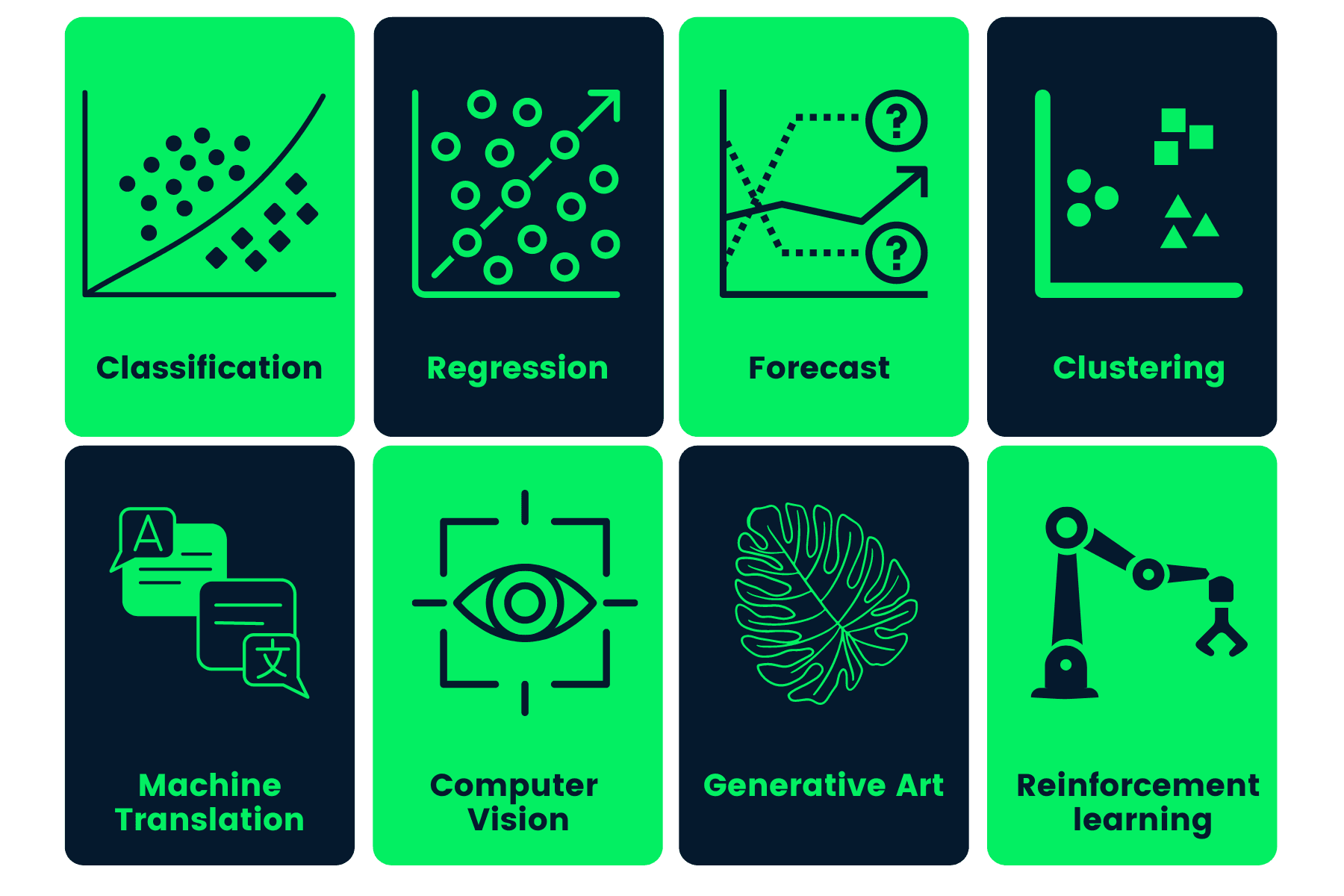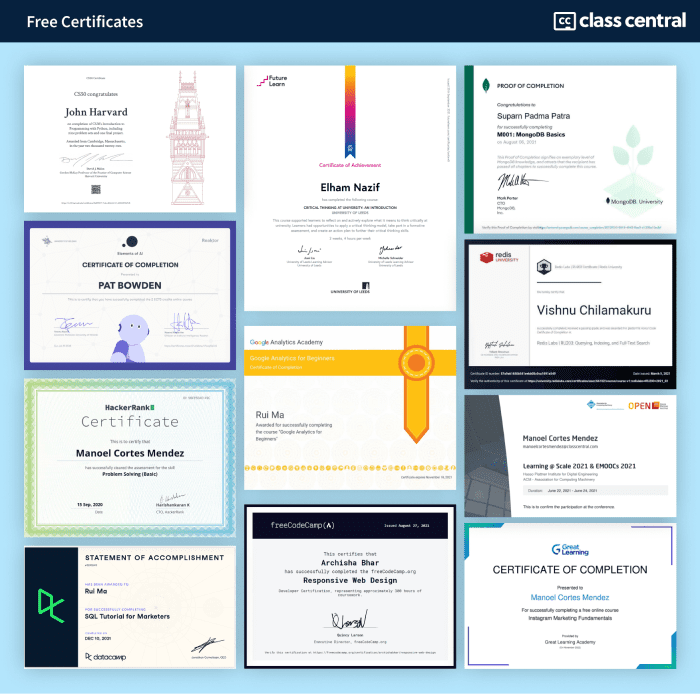All Categories
Featured
Table of Contents
You most likely understand Santiago from his Twitter. On Twitter, every day, he shares a whole lot of sensible things concerning machine understanding. Alexey: Prior to we go right into our main subject of relocating from software program design to machine learning, maybe we can begin with your background.
I went to college, got a computer science degree, and I began constructing software program. Back then, I had no idea regarding device understanding.
I recognize you've been using the term "transitioning from software design to artificial intelligence". I like the term "adding to my capability the device knowing abilities" a lot more because I believe if you're a software application designer, you are already supplying a great deal of value. By including artificial intelligence now, you're increasing the impact that you can have on the sector.
Alexey: This comes back to one of your tweets or possibly it was from your program when you compare two techniques to knowing. In this situation, it was some issue from Kaggle about this Titanic dataset, and you just discover exactly how to resolve this trouble utilizing a particular tool, like choice trees from SciKit Learn.
The 5-Minute Rule for Machine Learning
You first discover math, or straight algebra, calculus. When you know the math, you go to equipment discovering concept and you discover the theory. 4 years later, you lastly come to applications, "Okay, how do I utilize all these four years of math to resolve this Titanic trouble?" Right? So in the former, you type of save yourself time, I assume.
If I have an electrical outlet right here that I need replacing, I don't want to most likely to university, invest four years comprehending the mathematics behind electrical power and the physics and all of that, simply to transform an electrical outlet. I prefer to begin with the outlet and find a YouTube video that aids me experience the problem.
Bad analogy. You obtain the concept? (27:22) Santiago: I truly like the concept of beginning with a problem, trying to throw out what I know up to that trouble and understand why it doesn't function. Then order the tools that I need to resolve that trouble and start excavating much deeper and deeper and deeper from that point on.
Alexey: Possibly we can speak a little bit about discovering resources. You stated in Kaggle there is an introduction tutorial, where you can obtain and find out just how to make decision trees.
The only demand for that program is that you understand a little bit of Python. If you're a programmer, that's a fantastic beginning factor. (38:48) Santiago: If you're not a developer, then I do have a pin on my Twitter account. If you most likely to my profile, the tweet that's going to get on the top, the one that claims "pinned tweet".
The 3-Minute Rule for Advanced Machine Learning Course

Even if you're not a programmer, you can begin with Python and function your means to more machine knowing. This roadmap is focused on Coursera, which is a platform that I really, actually like. You can audit every one of the programs completely free or you can spend for the Coursera membership to obtain certifications if you wish to.
Alexey: This comes back to one of your tweets or maybe it was from your training course when you compare two techniques to understanding. In this case, it was some issue from Kaggle concerning this Titanic dataset, and you just learn just how to address this issue making use of a details tool, like choice trees from SciKit Learn.

You initially find out mathematics, or direct algebra, calculus. When you recognize the mathematics, you go to equipment learning theory and you discover the concept.
If I have an electrical outlet below that I need replacing, I do not desire to go to college, invest 4 years understanding the mathematics behind electrical power and the physics and all of that, simply to change an outlet. I would rather start with the electrical outlet and find a YouTube video that assists me go via the issue.
Bad analogy. You obtain the idea? (27:22) Santiago: I actually like the idea of beginning with a trouble, trying to toss out what I know up to that trouble and recognize why it does not work. Then get the devices that I require to solve that problem and start excavating much deeper and much deeper and deeper from that factor on.
To ensure that's what I usually advise. Alexey: Perhaps we can chat a bit about learning resources. You stated in Kaggle there is an introduction tutorial, where you can get and learn exactly how to choose trees. At the start, prior to we started this interview, you mentioned a couple of books too.
Facts About How I Went From Software Development To Machine ... Uncovered
The only demand for that program is that you understand a little bit of Python. If you go to my account, the tweet that's going to be on the top, the one that states "pinned tweet".
Also if you're not a programmer, you can begin with Python and work your method to even more artificial intelligence. This roadmap is concentrated on Coursera, which is a platform that I truly, truly like. You can examine every one of the courses completely free or you can spend for the Coursera registration to obtain certifications if you desire to.
The Greatest Guide To Machine Learning Course - Learn Ml Course Online
Alexey: This comes back to one of your tweets or perhaps it was from your course when you compare 2 approaches to knowing. In this instance, it was some trouble from Kaggle concerning this Titanic dataset, and you just find out just how to fix this problem using a certain tool, like decision trees from SciKit Learn.

You initially discover mathematics, or straight algebra, calculus. When you understand the math, you go to equipment understanding concept and you discover the concept. Four years later on, you ultimately come to applications, "Okay, how do I use all these four years of mathematics to fix this Titanic problem?" ? So in the former, you type of conserve on your own a long time, I believe.
If I have an electrical outlet here that I need changing, I don't intend to most likely to college, invest four years understanding the math behind electrical power and the physics and all of that, just to change an outlet. I would rather begin with the electrical outlet and find a YouTube video that aids me experience the problem.
Poor analogy. You obtain the concept? (27:22) Santiago: I really like the concept of starting with a trouble, attempting to toss out what I know approximately that trouble and comprehend why it does not function. After that grab the tools that I require to address that issue and begin digging deeper and much deeper and much deeper from that point on.
To ensure that's what I typically advise. Alexey: Maybe we can talk a little bit about learning sources. You stated in Kaggle there is an intro tutorial, where you can obtain and find out how to choose trees. At the start, before we began this meeting, you mentioned a pair of publications.
Little Known Questions About What Do Machine Learning Engineers Actually Do?.
The only demand for that program is that you understand a little bit of Python. If you go to my profile, the tweet that's going to be on the top, the one that claims "pinned tweet".
Even if you're not a programmer, you can start with Python and function your means to even more artificial intelligence. This roadmap is concentrated on Coursera, which is a platform that I really, truly like. You can examine all of the courses completely free or you can spend for the Coursera registration to get certificates if you intend to.
That's what I would do. Alexey: This comes back to one of your tweets or possibly it was from your training course when you compare 2 techniques to discovering. One approach is the trouble based technique, which you simply discussed. You discover a trouble. In this case, it was some issue from Kaggle about this Titanic dataset, and you just discover how to address this trouble making use of a certain device, like decision trees from SciKit Learn.
You initially discover mathematics, or direct algebra, calculus. When you know the math, you go to machine discovering theory and you learn the concept.
Embarking On A Self-taught Machine Learning Journey Things To Know Before You Get This
If I have an electric outlet right here that I need changing, I do not desire to most likely to college, spend 4 years understanding the math behind electricity and the physics and all of that, just to alter an outlet. I prefer to begin with the electrical outlet and find a YouTube video that aids me go through the issue.
Poor analogy. Yet you get the concept, right? (27:22) Santiago: I really like the concept of beginning with a trouble, trying to throw away what I know approximately that issue and comprehend why it doesn't function. Get hold of the devices that I require to solve that problem and start digging much deeper and deeper and deeper from that factor on.

So that's what I normally recommend. Alexey: Maybe we can speak a little bit regarding learning sources. You stated in Kaggle there is an intro tutorial, where you can get and find out just how to make choice trees. At the start, prior to we began this meeting, you mentioned a number of books also.
The only requirement for that course is that you recognize a little bit of Python. If you go to my account, the tweet that's going to be on the top, the one that says "pinned tweet".
Also if you're not a developer, you can begin with Python and function your means to more artificial intelligence. This roadmap is concentrated on Coursera, which is a platform that I actually, actually like. You can investigate all of the programs completely free or you can pay for the Coursera membership to get certificates if you desire to.
Table of Contents
Latest Posts
How To Master Leetcode For Software Engineer Interviews
Mastering Data Structures & Algorithms For Software Engineering Interviews
How To Optimize Your Resume For Faang Software Engineering Jobs
More
Latest Posts
How To Master Leetcode For Software Engineer Interviews
Mastering Data Structures & Algorithms For Software Engineering Interviews
How To Optimize Your Resume For Faang Software Engineering Jobs